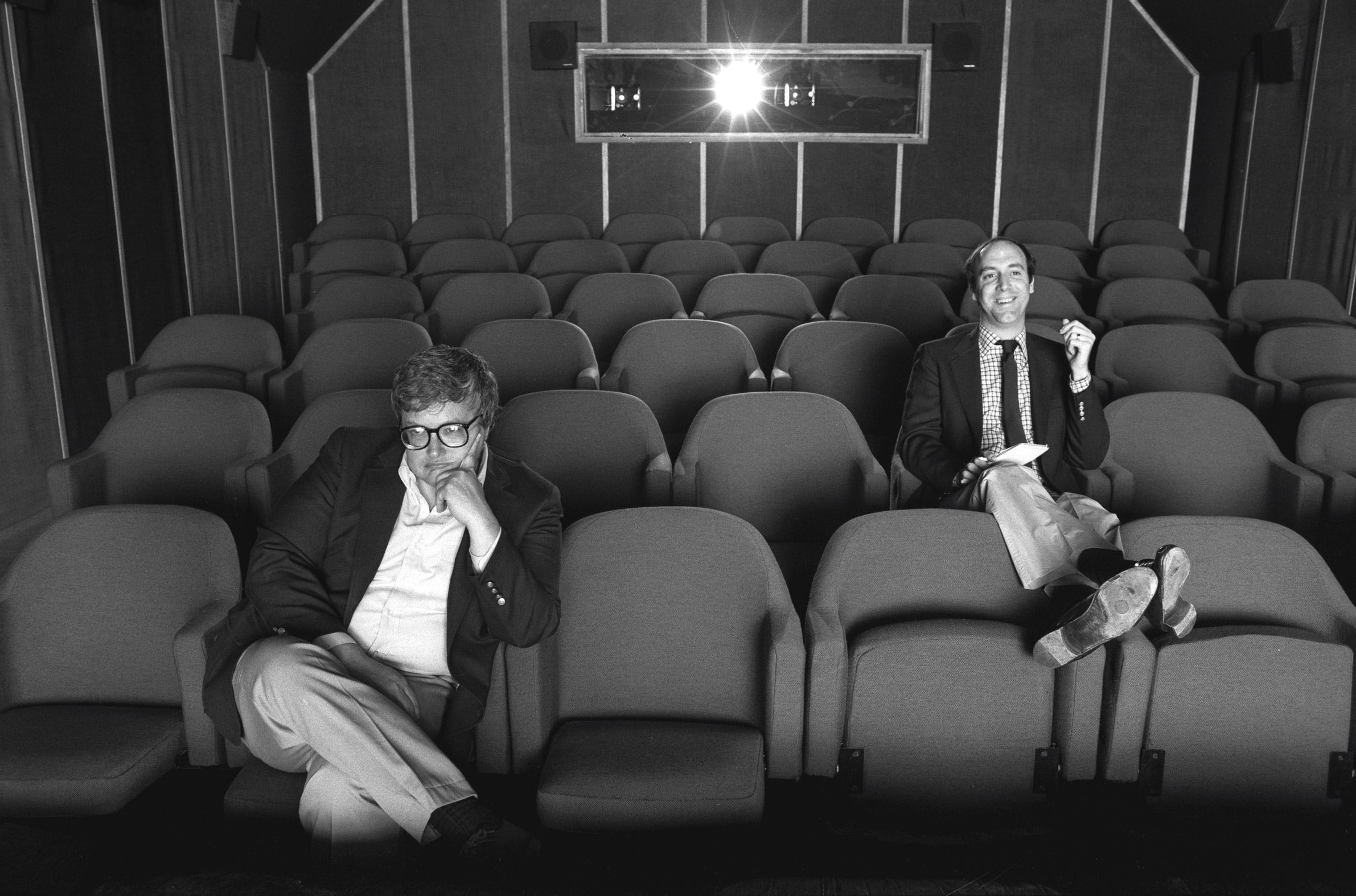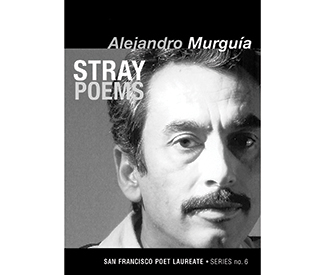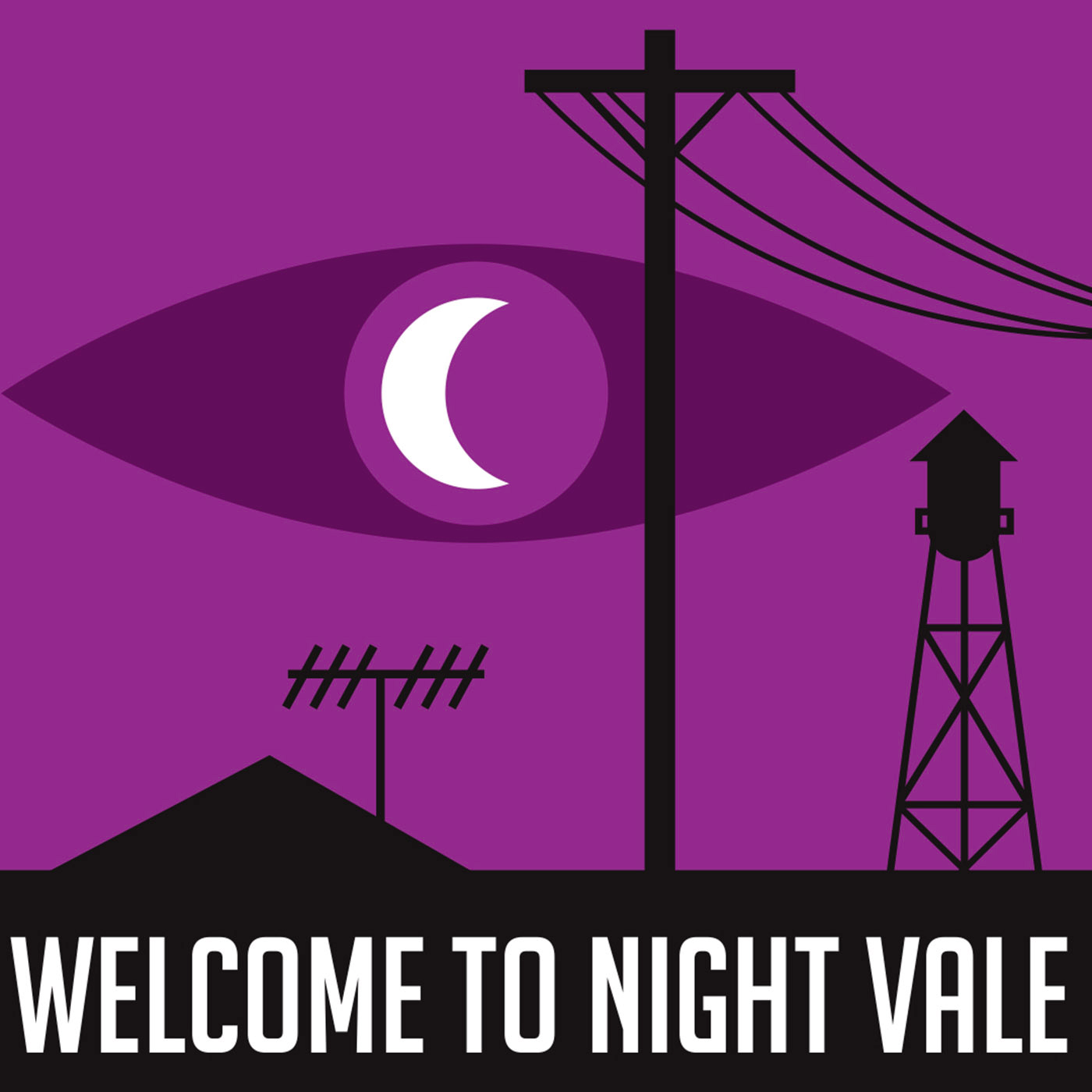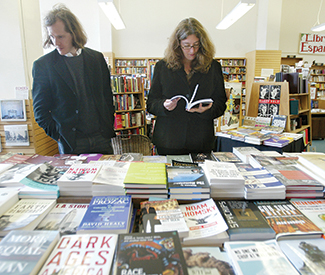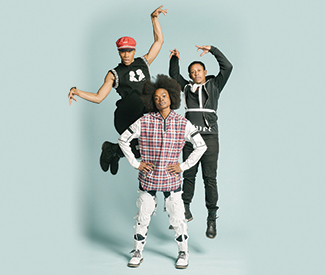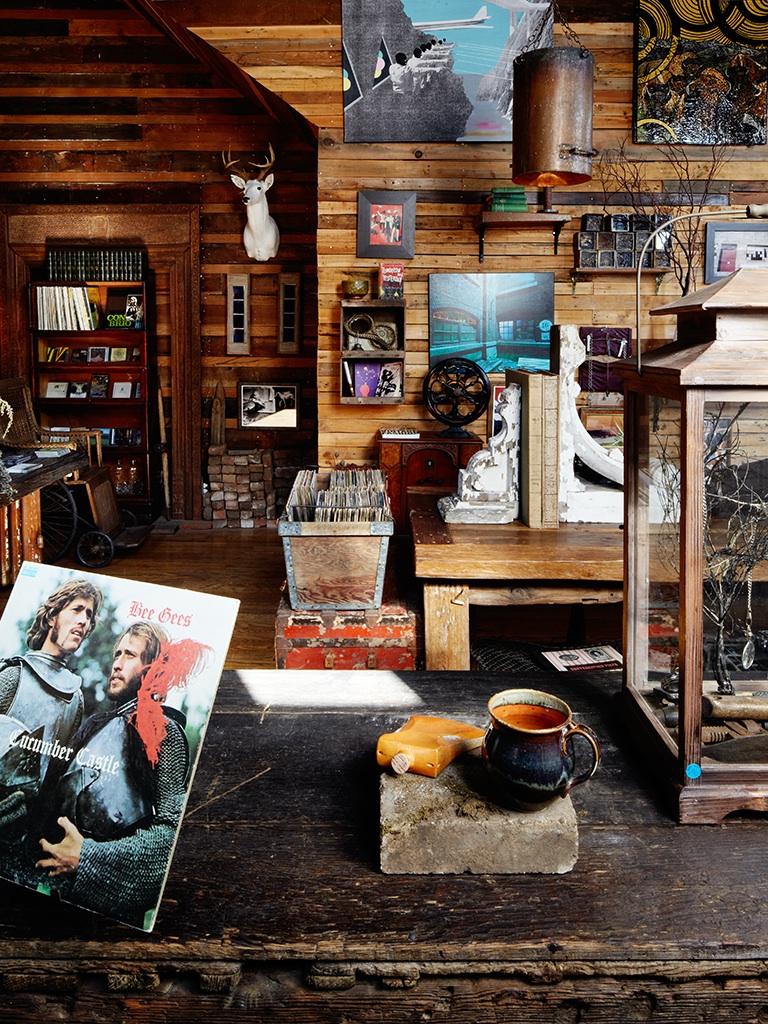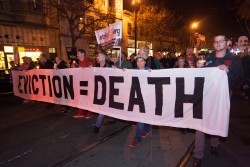WEDNESDAY 20
ROCK
Bottom of the Hill: 1233 17th St., San Francisco. Screaming Females, Upset, Peace Creep, 9 p.m., $10.
Brick & Mortar Music Hall: 1710 Mission, San Francisco. U.S. Girls, Chasms, Ether Island, 9 p.m., $7-$10.
The Chapel: 777 Valencia St., San Francisco. The Reverend Horton Heat, Larry & His Flask, Deke Dickerson, 9 p.m., $25.
El Rio: 3158 Mission, San Francisco. Apt H, Neon Satori, Pharaohs, 8 p.m., $5.
Elbo Room: 647 Valencia, San Francisco. Rocket Queens, BROFX, 9 p.m., $7.
Hemlock Tavern: 1131 Polk, San Francisco. Qui, Roland, Big Long Now, 8:30 p.m., $7.
Hotel Utah: 500 Fourth St., San Francisco. Josh Berwanger Band, Mammoth Life, The Silhouette Era, 8 p.m., $10.
The Knockout: 3223 Mission, San Francisco. Self-Inflicted Wounds, Balms, Demimonde, DJ Ryan Smith, 9:30 p.m., $6.
Milk Bar: 1840 Haight, San Francisco. City Tribe, We Arsons, The Wooden Suns, 8:30 p.m., $5.
DANCE
The Cafe: 2369 Market, San Francisco. “Sticky Wednesdays,” w/ DJ Mark Andrus, 8 p.m., free.
Cat Club: 1190 Folsom, San Francisco. “Bondage A Go Go,” w/ DJs Damon, Tomas Diablo, & guests, 9:30 p.m., $5-$10.
Club X: 715 Harrison, San Francisco. “Electro Pop Rocks,” 18+ dance night with DJ Dan, SwitchBlade, Frank Nitty, more, 9 p.m.
The EndUp: 401 Sixth St., San Francisco. “Tainted Techno Trance,” 10 p.m.
F8: 1192 Folsom St., San Francisco. “Housepitality,” w/ Marcel Vogel, James What, Tyrel Williams, Ben Bean, 9 p.m., $5-$10.
Harlot: 46 Minna, San Francisco. “Qoöl,” 5 p.m.
Infusion Lounge: 124 Ellis, San Francisco. “Indulgence,” 10 p.m.
Lexington Club: 3464 19th St., San Francisco. “Friends of Dorothy,” w/ DJ Sissyslap, 9 p.m., free.
Lookout: 3600 16th St., San Francisco. “What?,” w/ resident DJ Tisdale and guests, 7 p.m., free.
Madrone Art Bar: 500 Divisadero, San Francisco. “Rock the Spot,” 9 p.m., free.
Make-Out Room: 3225 22nd St., San Francisco. “Burn Down the Disco,” w/ DJs 2shy-shy & Melt w/U, Third Wednesday of every month, 9 p.m., free.
MatrixFillmore: 3138 Fillmore, San Francisco. “Reload,” w/ DJ Big Bad Bruce, 10 p.m., free.
Monarch: 101 6th St., San Francisco. “We Are Monsters,” w/ Sammy D, Mozhgan, Jason Greer, 10 p.m., $5-$10.
Q Bar: 456 Castro, San Francisco. “Booty Call,” w/ Juanita More, Joshua J, guests, 9 p.m., $3.
Showdown: 10 Sixth St., San Francisco. “Nokturnal,” w/ DJs Coyle & Gonya, Third Wednesday of every month, 9 p.m., free.
HIP-HOP
DNA Lounge: 375 11th St., San Francisco. Lunice, Rockie Fresh, B. Bravo, 8 p.m., $10-$15.
Double Dutch: 3192 16th St., San Francisco. “Cash IV Gold,” w/ DJs Kool Karlo, Roost Uno, and Sean G, 10 p.m., free.
The Independent: 628 Divisadero, San Francisco. Latyrx featuring Skins & Needles, Forrest Day, DJ Aaron Axelsen, hosted by Blackalicious, 9 p.m., $25.
Skylark Bar: 3089 16th St., San Francisco. “Mixtape Wednesday,” w/ resident DJs Strategy, Junot, Herb Digs, & guests, 9 p.m., $5.
ACOUSTIC
Cafe Divine: 1600 Stockton, San Francisco. Craig Ventresco & Meredith Axelrod, 7 p.m., free.
Club Deluxe: 1511 Haight, San Francisco. Happy Hour Bluegrass, 6:30 p.m., free.
Fiddler’s Green: 1333 Columbus, San Francisco. Terry Savastano, Every other Wednesday, 9:30 p.m., free/donation.
The Lost Church: 65 Capp St., San Francisco. Drea Muldavin, 8 p.m., $10.
JAZZ
Amnesia: 853 Valencia, San Francisco. Gaucho, Eric Garland’s Jazz Session, The Amnesiacs, 7 p.m., free.
Burritt Room: 417 Stockton St., San Francisco. Terry Disley’s Rocking Jazz Trio, 6 p.m., free.
Jazz Bistro At Les Joulins: 44 Ellis, San Francisco. Charles Unger Experience, 7:30 p.m., free.
Le Colonial: 20 Cosmo, San Francisco. The Cosmo Alleycats featuring Ms. Emily Wade Adams, 7 p.m., free.
Pier 23 Cafe: Pier 23, San Francisco. Ned Boynton & Friends, 6 p.m., free.
Red Poppy Art House: 2698 Folsom, San Francisco. The Suppression of Sound: An Evening of Poetry and Music, with Thomas Sayers Ellis, James Brandon Lewis, and Raina J. León, 7:30 p.m., $10-$15.
Revolution Cafe: 3248 22nd St., San Francisco. Michael Parsons Trio, Every other Wednesday, 8:30 p.m., free/donation.
Savanna Jazz Club: 2937 Mission, San Francisco. “Cat’s Corner,” 9 p.m., $10.
Sheba Piano Lounge: 1419 Fillmore, San Francisco. Fran Sholly, 8 p.m.
Top of the Mark: One Nob Hill, 999 California, San Francisco. Ricardo Scales, Wednesdays, 6:30-11:30 p.m., $5.
Zingari: 501 Post, San Francisco. Anya Malkiel, 7:30 p.m., free.
INTERNATIONAL
Bissap Baobab: 3372 19th St., San Francisco. Timba Dance Party, w/ DJ WaltDigz, 10 p.m., $5.
Cafe Cocomo: 650 Indiana, San Francisco. “Bachatalicious,” w/ DJs Good Sho & Rodney, 7 p.m., $5-$10.
Pachamama Restaurant: 1630 Powell, San Francisco. “Cafe LatinoAmericano,” 8 p.m., $5.
Yoshi’s San Francisco: 1330 Fillmore, San Francisco. Jorge Ben Jor, 8 & 10 p.m., $35-$55.
BLUES
Biscuits and Blues: 401 Mason, San Francisco. Mitch Woods & His Rocket 88s, 7:30 & 9:30 p.m., $15.
The Royal Cuckoo: 3202 Mission, San Francisco. Big Bones & Chris Siebert, 7:30 p.m., free.
The Saloon: 1232 Grant, San Francisco. Takezo, 9:30 p.m.
SOUL
Boom Boom Room: 1601 Fillmore, San Francisco. “Soul Train Revival,” w/ Ziek McCarter, Third Wednesday of every month, 9:30 p.m., $5.
Cafe Du Nord: 2170 Market, San Francisco. Daley, 7:30 p.m., sold out.
THURSDAY 21
ROCK
Amnesia: 853 Valencia, San Francisco. Nova Albion, The Foreign Resort, 9 p.m., $7-$10.
Brick & Mortar Music Hall: 1710 Mission, San Francisco. The Rock Collection, featuring Stu Allen, Greg Anton, Mark Karan, Melvin Seals, and Robin Sylvester, 9 p.m., $10-$13.
The Chapel: 777 Valencia St., San Francisco. Howe Gelb, 9 p.m., $18-$20.
DNA Lounge: 375 11th St., San Francisco. Norma Jean, Vanna, KEN Mode, Exotic Animal Petting Zoo, Name, 7 p.m., $13-$18.
Hemlock Tavern: 1131 Polk, San Francisco. Lemme Adams, Hungry Skinny, Fox & The Law, Electric Shepherd, 8 p.m., $7.
The Independent: 628 Divisadero, San Francisco. Dengue Fever, Seventeen Evergreen, 8 p.m., $16-$18.
Milk Bar: 1840 Haight, San Francisco. Build Them to Break, The Trash Pop Icons, Protected Left, 8:30 p.m., free.
Monarch: 101 6th St., San Francisco. The Kimberly Trip, Poeina Suddarth, Claire on a Dare, Drivers, 8 p.m., $8.
Slim’s: 333 11th St., San Francisco. Albert Hammond Jr., Rathborne, 9 p.m., $21.
Thee Parkside: 1600 17th St., San Francisco. White Barons, Hornss, Winter Teeth, Rock Bottom, 9:30 p.m., $7.
DANCE
Abbey Tavern: 4100 Geary, San Francisco. DJ Schrobi-Girl, 10 p.m., free.
Aunt Charlie’s Lounge: 133 Turk, San Francisco. “Tubesteak Connection,” w/ DJ Bus Station John, 9 p.m., $5-$7.
The Cafe: 2369 Market, San Francisco. “¡Pan Dulce!,” 9 p.m., $5.
Cat Club: 1190 Folsom, San Francisco. “Throwback Thursdays,” ‘80s night with DJs Damon, Steve Washington, Dangerous Dan, and guests, 9 p.m., $6 (free before 9:30 p.m.).
The Cellar: 685 Sutter, San Francisco. “XO,” w/ DJs Astro & Rose, 10 p.m., $5.
Club X: 715 Harrison, San Francisco. “The Crib,” 9:30 p.m., $10, 18+.
DNA Lounge: 375 11th St., San Francisco. “Turbo Drive,” w/ Anoraak, Marrow, plus DJs Devon, MyKill, and Mr. Smith, 9:30 p.m., $15.
Elbo Room: 647 Valencia, San Francisco. “Afrolicious,” w/ DJs Pleasuremaker, Señor Oz, and live guests, 9:30 p.m., $5-$8.
F8: 1192 Folsom St., San Francisco. “Beat Church,” w/ Mint, Humpfree Lowgart, residents, 9 p.m., $5-$10.
Infusion Lounge: 124 Ellis, San Francisco. “I Love Thursdays,” 10 p.m., $10.
John Colins: 138 Minna, San Francisco. “SoLuna,” w/ resident DJ Miquel Penn, Third Thursday of every month, 9 p.m., free.
The Knockout: 3223 Mission, San Francisco. Never Knows, Exotic Club, Bézier, DJs Nihar & Mashi Mashi, 9:30 p.m., $6.
Laszlo: 2532 Mission, San Francisco. “Werk It,” w/ DJ Kool Karlo, Third Thursday of every month, 9 p.m., free.
Madrone Art Bar: 500 Divisadero, San Francisco. “Night Fever,” 9 p.m., $5 after 10 p.m.
Mighty: 119 Utah, San Francisco. Alland Byallo, 10 p.m., $10 before 11 p.m.
Q Bar: 456 Castro, San Francisco. “Throwback Thursday,” w/ DJ Jay-R, 9 p.m., free.
Raven: 1151 Folsom St., San Francisco. “1999,” w/ VJ Mark Andrus, 8 p.m., free.
Rickshaw Stop: 155 Fell, San Francisco. “Popscene,” w/ Deptford Goth, Sohn, 9:30 p.m., $13-$15.
Ruby Skye: 420 Mason, San Francisco. “Awakening,” Coldharbour Recordings Night with Khomha, Beat Service, Grube & Hovsepian, 9 p.m., $20 advance.
SPARC: 1256 Mission, San Francisco. “Surya Dub Mission,” w/ Kush Arora, J-Boogie, DJ Sep, Maneesh the Twister, 7-10 p.m., free with RSVP (must be 18+).
The Tunnel Top: 601 Bush, San Francisco. “Tunneltop,” DJs Avalon and Derek ease you into the weekend with a cool and relaxed selection of tunes spun on vinyl, 10 p.m., free.
Underground SF: 424 Haight, San Francisco. “Bubble,” 10 p.m., free.
Vessel: 85 Campton, San Francisco. “Base,” w/ Nathan Barato, 10 p.m., $5-$10.
HIP-HOP
Eastside West: 3154 Fillmore, San Francisco. “Throwback Thursdays,” w/ DJ Madison, 9 p.m., free.
The EndUp: 401 Sixth St., San Francisco. “Cypher,” w/ resident DJ Big Von, 10 p.m., $5-$10.
Park 77 Sports Bar: 77 Cambon, San Francisco. “Slap N Tite,” w/ resident Cali King Crab DJs Sabotage Beats & Jason Awesome, free.
Showdown: 10 Sixth St., San Francisco. “Tougher Than Ice,” w/ DJs Vin Sol, Ruby Red I, and Jeremy Castillo, Third Thursday of every month, 10 p.m.
Skylark Bar: 3089 16th St., San Francisco. “Peaches,” w/lady DJs DeeAndroid, Lady Fingaz, That Girl, Umami, Inkfat, and Andre, 10 p.m., free.
ACOUSTIC
Bazaar Cafe: 5927 California, San Francisco. Acoustic Open Mic, 7 p.m.
Bottom of the Hill: 1233 17th St., San Francisco. Yesway, TaughtMe, Magic Magic Roses, 8:30 p.m., $8.
Cigar Bar & Grill: 850 Montgomery, San Francisco. The Neckbeard Boys, 8 p.m.
The Lost Church: 65 Capp St., San Francisco. The New Thoreaus, Ghost Lore, 8 p.m., $10.
Plough & Stars: 116 Clement, San Francisco. Tipsy House, Third Thursday of every month, 9 p.m., free.
JAZZ
Blush! Wine Bar: 476 Castro, San Francisco. Doug Martin’s Avatar Ensemble, 7:30 p.m., free.
Bottle Cap: 1707 Powell, San Francisco. The North Beach Sound with Ned Boynton, Jordan Samuels, and Tom Vickers, 7 p.m., free.
Cafe Claude: 7 Claude, San Francisco. Dick Fregulia’s Good Vibes Trio, 7:30 p.m., free.
The Lucky Horseshoe: 453 Cortland, San Francisco. Ralph Carney’s Serious Jass Project, 9 p.m.
Pier 23 Cafe: Pier 23, San Francisco. Art Lewis Trio, 7 p.m., free.
The Rite Spot Cafe: 2099 Folsom, San Francisco. Shannon Wolfe & Grant Levin, 8:30 p.m., free.
The Royal Cuckoo: 3202 Mission, San Francisco. Charlie Siebert & David Udolf, 7:30 p.m., free.
Savanna Jazz Club: 2937 Mission, San Francisco. Savanna Jazz Jam with Eddy Ramirez, 7:30 p.m., $5.
Zingari: 501 Post, San Francisco. Barbara Ochoa, 7:30 p.m., free.
INTERNATIONAL
1015 Folsom: 1015 Folsom St., San Francisco. “1002 Nights: A Celebration of the Life & Music of Cheb i Sabbah,” w/ Jai Uttal, Sukhawat Ali Khan & Party, Jef Stott, Momo Loudiyi, Opium Sabbah, Eva El Beze, Karsh Kale & The Midival Punditz, DJ Rekha, Dub Gabriel, Janaka Selekta, Shabi Farooq, Radiohiro, Fabian Alsultany, Little John, DJ Sep, Tarun Nayer, DJ Dragonfly, Jimmy Love, Bob Duskis, Maneesh the Twister, DJ Amar, many more, 7 p.m., $10-$20 suggested donation.
Bissap Baobab: 3372 19th St., San Francisco. “Pa’Lante!,” w/ Juan G, El Kool Kyle, Mr. Lucky, 10 p.m., $5.
Cafe Cocomo: 650 Indiana, San Francisco. Julio Bravo y Su Orquesta Salsabor, 8 p.m., $12.
Pachamama Restaurant: 1630 Powell, San Francisco. “Jueves Flamencos,” 8 p.m., free.
Sheba Piano Lounge: 1419 Fillmore, San Francisco. Gary Flores & Descarga Caliente, 8 p.m.
Verdi Club: 2424 Mariposa, San Francisco. The Verdi Club Milonga, w/ Christy Coté, DJ Emilio Flores, guests, 9 p.m., $10-$15.
Yoshi’s San Francisco: 1330 Fillmore, San Francisco. Septeto Nacional de Cuba, 8 & 10 p.m., $23-$28.
REGGAE
Pissed Off Pete’s: 4528 Mission St., San Francisco. Reggae Thursdays, w/ resident DJ Jah Yzer, 9 p.m., free.
BLUES
50 Mason Social House: 50 Mason, San Francisco. Bill Phillippe, 5:30 p.m., free.
Biscuits and Blues: 401 Mason, San Francisco. Jarekus Singleton, 7:30 & 9:30 p.m., $18.
Jazz Bistro At Les Joulins: 44 Ellis, San Francisco. Bohemian Knuckleboogie, 7:30 p.m., free.
The Saloon: 1232 Grant, San Francisco. Chris Ford, Third Thursday of every month, 4 p.m.; Wendy DeWitt, 9:30 p.m.
COUNTRY
The Parlor: 2801 Leavenworth, San Francisco. “Twang Honky Tonk & Country Jamboree,” w/ DJ Little Red Rodeo, 7 p.m., free.
EXPERIMENTAL
The Luggage Store: 1007 Market, San Francisco. Erors, Mountain vs. Building, 8 p.m., $6-$10.
Swedish American Hall: 2174 Market, San Francisco. Thomas Dolby: The Invisible Lighthouse Live, The synth-pop pioneer turns his attention to film for this transmedia event that combines documentary movie footage, live narration, and — naturally — electronic music and sound design., 8 p.m., $25-$60.
SOUL
Make-Out Room: 3225 22nd St., San Francisco. “Soul: It’s the Real Thing,” w/ The Selecter DJ Kirk & Jon Blunck, 10 p.m., free.
FRIDAY 22
ROCK
50 Mason Social House: 50 Mason, San Francisco. The Rabbles, The Wearies, Red Elk, Feed Me Jack, Modern Kicks, 8 p.m.
Bottom of the Hill: 1233 17th St., San Francisco. Papa, Panic Is Perfect, Bent Shapes, 9:30 p.m., $12.
The Chapel: 777 Valencia St., San Francisco. Lumerians, Factrix, Li Xi, 9 p.m., $12-$15.
Connecticut Yankee: 100 Connecticut, San Francisco. Pony Fight, 1906, The Quart of Blood Technique, 10 p.m.
El Rio: 3158 Mission, San Francisco. Friday Live: The Whoa Nellies, DJ Emotions, 10 p.m., free.
Hemlock Tavern: 1131 Polk, San Francisco. Moonbeams, Slowness, Venus Beltran, 9:30 p.m., $7.
Milk Bar: 1840 Haight, San Francisco. Wax Idols, Metal Mother, Opulence, DJ Omar, 9 p.m., $10.
Rickshaw Stop: 155 Fell, San Francisco. John Vanderslice, Doe Eye, 8:30 p.m., $15.
Slim’s: 333 11th St., San Francisco. Protest the Hero, Architects, The Kindred, Affiance, 7:30 p.m., $20.
Sub-Mission Art Space (Balazo 18 Gallery): 2183 Mission, San Francisco. Brave Ulysses, Downfall, Waterfly Spigot, Black Bones, Rundown Radio, 8 p.m.
Thee Parkside: 1600 17th St., San Francisco. Brocas Helm, Hatchet, Exmortus, Midnight Chaser, 9 p.m., $10.
DANCE
1015 Folsom: 1015 Folsom St., San Francisco. SnowGlobe Pre-Party with Amon Tobin (DJ set), Machinedrum, Just Blaze, G Jones, Mr. Rogers, Vin Sol, Stylust Beats, Digital Rust, Bogl vs. Dials, plus many more, 10 p.m., $20-$30 advance.
Audio Discotech: 316 11th St., San Francisco. Poolside, Pacific Disco, Papa Lu, 9:30 p.m., $10 advance.
BeatBox: 314 11th St., San Francisco. “U-Haul,” w/ DJs Jenna Riot & China G, 10 p.m., $5-$10.
Cafe Flore: 2298 Market, San Francisco. “Kinky Beats,” w/ DJ Sergio, 10 p.m., free.
The Cafe: 2369 Market, San Francisco. “Boy Bar,” w/ DJ Matt Consola, 9 p.m., $5.
Cat Club: 1190 Folsom, San Francisco. “Dark Shadows,” w/ DJs Daniel Skellington, Melting Girl, Owen, and Mz. Samantha, 9:30 p.m., $7 ($3 before 10 p.m.).
The Cellar: 685 Sutter, San Francisco. “F.T.S.: For the Story,” 10 p.m.
Elbo Room: 647 Valencia, San Francisco. “120 Minutes,” w/ House of LaDosha, Santa Muerte, Chauncey CC, 10 p.m., $10-$15.
The EndUp: 401 Sixth St., San Francisco. “Fever,” 10 p.m., free before midnight.
The Grand Nightclub: 520 4th St., San Francisco. “We Rock Fridays,” 9:30 p.m.
Harlot: 46 Minna, San Francisco. Sharam Jey, J. Remy, Laura Lisbona, Jeff Hinchman, 9 p.m., $10.
Infusion Lounge: 124 Ellis, San Francisco. “Escape Fridays,” 10 p.m., $20.
Lookout: 3600 16th St., San Francisco. “HYSL,” 9 p.m., $3.
Madrone Art Bar: 500 Divisadero, San Francisco. “I ♥ the ‘90s,” w/ DJs Samala, Teo, Mr. Grant, & Sonny Phono, Fourth Friday of every month, 9 p.m., $5.
Manor West: 750 Harrison, San Francisco. “Fortune Fridays,” 10 p.m., free before 11 p.m. with RSVP.
MatrixFillmore: 3138 Fillmore, San Francisco. “F-Style Fridays,” w/ DJ Jared-F, 9 p.m.
Mezzanine: 444 Jessie, San Francisco. “Dirtybird Players,” w/ Catz ‘N Dogz, Cause & Affect, J.Phlip, Leroy Peppers, Worthy, 9 p.m., $10-$20.
Mighty: 119 Utah, San Francisco. Aphrodite, Jamal & Audio Angel, Kimba, Chris the Junglist, Audio 1, Micah J, Kirin Rider, Sychosis, 10 p.m., $13 advance.
Monarch: 101 6th St., San Francisco. “Acid Test,” w/ D’Marc Cantu, Tyrel Williams, Bai-ee, Miguel Solari, Fil Latorre, 9:30 p.m., $12-$15.
Neck of the Woods: 406 Clement St., San Francisco. 100% Silk Label Tour, w/ Octo Octa, Magic Touch, Coyote Clean Up (on the upstairs stage), 9 p.m., $13-$15.
OMG: 43 6th St., San Francisco. “Release,” 9 p.m., free before 11 p.m.
Public Works: 161 Erie, San Francisco. Dubfire, DJ Rooz, Mossmoss, Bob Campbell, Bardia F, Keith Kraft, 9:30 p.m., $13-$20.
Q Bar: 456 Castro, San Francisco. “Pump: Worq It Out Fridays,” w/ resident DJ Christopher B, 9 p.m., $3.
Ruby Skye: 420 Mason, San Francisco. Super8 & Tab, 9 p.m., $20 advance.
Temple: 540 Howard, San Francisco. Blaus, Lenny Kiser, King James, Twin Spin, 10 p.m., $15.
Underground SF: 424 Haight, San Francisco. “Bionic,” 10 p.m., $5.
Vessel: 85 Campton, San Francisco. “Project X,” w/ Matth, Kepik, Beau Kelly, Rose, 10 p.m., $10-$30.
Wish: 1539 Folsom, San Francisco. “Bridge the Gap,” w/ resident DJ Don Kainoa, Fridays, 6-10 p.m., free.
HIP-HOP
DNA Lounge: 375 11th St., San Francisco. “Hella Fresh Fest,” w/ Zion I, Tribal Seeds, CunninLynguists, Pacific Dub, Richie Cunning, Rey Resurreccion, Rglnd & Duckwrth, MK Smth, more, 8 p.m., $25-$50.
EZ5: 682 Commercial, San Francisco. “Decompression,” Fridays, 5-9 p.m.
John Colins: 138 Minna, San Francisco. “#Flow,” w/ The Whooligan & Mikos Da Gawd, Fourth Friday of every month, 10 p.m., free befoe 11 p.m.
ACOUSTIC
Bazaar Cafe: 5927 California, San Francisco. Homesick Elephant, 7 p.m.
Cafe Du Nord: 2170 Market, San Francisco. Supermule, Cahalen Morrison & Eli West, The Barbary Ghosts, 9:30 p.m., $9-$12.
Dolores Park Cafe: 501 Dolores, San Francisco. Keeva, Beryl Baker, 7:30 p.m.
Hotel Utah: 500 Fourth St., San Francisco. Jason Powers, Karmina, XY Unlimited, 9 p.m., $10.
The Lost Church: 65 Capp St., San Francisco. “Once Silent Hollows,” w/ Jean Marc, Vessna Scheff, and David Colon, 8 p.m., $10.
Plough & Stars: 116 Clement, San Francisco. Get Offa My Lawn, 9 p.m.
The Sports Basement: 610 Old Mason, San Francisco. “Breakfast with Enzo,” w/ Enzo Garcia, 10 a.m., $5.
Swedish American Hall: 2174 Market, San Francisco. William Fitzsimmons, Denison Witmer, 8 p.m., $20.
JAZZ
Beach Chalet Brewery & Restaurant: 1000 Great Highway, San Francisco. Johnny Smith, 8 p.m., free.
Bird & Beckett: 653 Chenery, San Francisco. Chuck Peterson Quintet, Fourth Friday of every month, 5:30 p.m.
Cafe Claude: 7 Claude, San Francisco. Jerry Oakley Trio, 7:30 p.m., free.
Jazz Bistro At Les Joulins: 44 Ellis, San Francisco. Charles Unger Experience, 7:30 p.m., free.
The Palace Hotel: 2 New Montgomery, San Francisco. The Klipptones, 8 p.m., free.
Red Poppy Art House: 2698 Folsom, San Francisco. Voices for the Poppy: A Special Benefit Concert, Meklit Hadero hosts music and poetry by Tiffany Austin, Tom Sway, Prasant Radhakrishnan, Todd Thomas Brown, Schuyler Karr, and Michael Warr., 7:30 p.m., $15-$50.
The Royal Cuckoo: 3202 Mission, San Francisco. Steve Lucky & Carmen Getit, 7:30 p.m., free.
Savanna Jazz Club: 2937 Mission, San Francisco. Carol Luckenbach, 7:30 p.m., $8.
Sheba Piano Lounge: 1419 Fillmore, San Francisco. Sebastian Parker Quartet, 9 p.m.
Top of the Mark: One Nob Hill, 999 California, San Francisco. Black Market Jazz Orchestra, 9 p.m., $10.
Zingari: 501 Post, San Francisco. Joyce Grant, 8 p.m., free.
INTERNATIONAL
Amnesia: 853 Valencia, San Francisco. Baxtalo Drom, International shimmying for lovers of Balkan music, bellydancers, and burlesque., Fourth Friday of every month, 9 p.m., $5-$10.
Bissap Baobab: 3372 19th St., San Francisco. “Paris-Dakar African Mix Coupe Decale,” 10 p.m., $5.
Cafe Cocomo: 650 Indiana, San Francisco. Taste Fridays, featuring local cuisine tastings, salsa bands, dance lessons, and more, 7:30 p.m., $15 (free entry to patio).
Cigar Bar & Grill: 850 Montgomery, San Francisco. Orquesta Borinquen, 8 p.m.
Pachamama Restaurant: 1630 Powell, San Francisco. Cuban Night with Fito Reinoso, 7:30 & 9:15 p.m., $15-$18.
Yoshi’s San Francisco: 1330 Fillmore, San Francisco. Septeto Nacional de Cuba, 8 & 10 p.m., $26-$30.
REGGAE
Gestalt Haus: 3159 16th St., San Francisco. “Music Like Dirt,” 7:30 p.m., free.
The Independent: 628 Divisadero, San Francisco. The Green, Kimie, Extra Classic, 9:30 p.m., sold out.
BLUES
Biscuits and Blues: 401 Mason, San Francisco. Jarekus Singleton, 7:30 & 10 p.m., $20.
Lou’s Fish Shack: 300 Jefferson St., San Francisco. Eldon Brown, 8:30 p.m.
The Saloon: 1232 Grant, San Francisco. David M’ore, 4 p.m.; Eugene Huggins, 9:30 p.m.
Tupelo: 1337 Green St., San Francisco. Marshall Law Band, 9 p.m.
FREE
Pier 23 Cafe: Pier 23, San Francisco. Danilo y Universal, 8 p.m., free.
FUNK
Make-Out Room: 3225 22nd St., San Francisco. “Loose Joints,” w/ DJs Centipede, Damon Bell, & Tom Thump, 10 p.m., $5.
SOUL
Brick & Mortar Music Hall: 1710 Mission, San Francisco. Marcus Cohen & The Congress, Kev Choice Ensemble, 9 p.m., $12-$15.
Edinburgh Castle: 950 Geary, San Francisco. “Soul Crush,” w/ DJ Serious Leisure, 10 p.m., free.
Underground SF: 424 Haight, San Francisco. “Sissy Strut,” w/ The Handsome Young Men (DJs Ponyboy, Lil MC, Katie Duck, & Durt), Fourth Friday of every month, 10 p.m., $3-$5.
SATURDAY 23
ROCK
Amoeba Music: 1855 Haight, San Francisco. Nik Turner’s Hawkwind, 2 p.m., free.
Bender’s: 806 S. Van Ness, San Francisco. Wild Eyes, Buffalo Tooth, 10 p.m., $5.
Bottom of the Hill: 1233 17th St., San Francisco. That’s Not Her, Scissors for Lefty, Vela Eyes, 9:30 p.m., $10-$12.
Brick & Mortar Music Hall: 1710 Mission, San Francisco. Nobunny, Nubs, Primitive Hearts, G. Green, DJ Kevin Spaghetti, 9 p.m., $12.
Cafe Du Nord: 2170 Market, San Francisco. Lee Gallagher & The Hallelujah, Coo Coo Birds, Be Calm Honcho, 9:30 p.m., $10-$12.
The Chapel: 777 Valencia St., San Francisco. The Entrance Band, Raw Geronimo, 9 p.m., $12-$15.
Elbo Room: 647 Valencia, San Francisco. “The Hop,” w/ The Royal Deuces, Cole Walker & His Rhythm Section, Kountry Kittens Burlesque, DJ Tom G, more, 9 p.m., $13.
Hemlock Tavern: 1131 Polk, San Francisco. Brother JT, Carlton Melton, Life Coach, Suzuki Junzo, 9:30 p.m., $8.
The Knockout: 3223 Mission, San Francisco. “Shine On,” w/ Electro Group, Cruel Summer, Corey, Tepid Joy, 9 p.m., $6.
Make-Out Room: 3225 22nd St., San Francisco. The Impersonations, Mane, 7:30 p.m., $8.
Neck of the Woods: 406 Clement St., San Francisco. The Parmesans, Cash for Gold, Mary Jones’ Lights, Staring@Stars, 9 p.m., $8-$10.
Slim’s: 333 11th St., San Francisco. Finntroll, Blackguard, Metsatöll, 9 p.m., $25.
Sub-Mission Art Space (Balazo 18 Gallery): 2183 Mission, San Francisco. Garrett Miranda, The Resistance Panel, Skitzofrenik, The Residuals, 8 p.m., $5.
Thee Parkside: 1600 17th St., San Francisco. Attik Door, Moxie Kids, Field of Stones, Rage Against Florence & The Machine, 9 p.m., $8.
DANCE
BeatBox: 314 11th St., San Francisco. “Evolution,” w/ Marco Da Silva, Christopher B, 10 p.m., $10-$15 advance.
Cafe Flore: 2298 Market, San Francisco. “Bistrotheque,” w/ DJ Ken Vulsion, 8 p.m., free.
Cat Club: 1190 Folsom, San Francisco. “Villainy: The Dance Club with a Dark Side – Celebrating 50 Years of Doctor Who,” w/ DJs Tomas Diablo, Donimo, Chris Zachos, Daniel Skellington, and Prince Charming, 9:30 p.m., $5-$8.
DNA Lounge: 375 11th St., San Francisco. “Bootie S.F.,” w/ A+D, DJ Dada, Smash-Up Derby, DJ Tripp, DJ Lex, Barney Iller, Teknacolor Ninja, more, 9 p.m., $10-$15.
S.F. Eagle: 398 12th St., San Francisco. “Sadistic Saturdays,” Fourth Saturday of every month, 10 p.m., free.
The EndUp: 401 Sixth St., San Francisco. Shangri-La, Asian queer dance party., Fourth Saturday of every month, 10 p.m., $15-$20 (free before 11 p.m.).
F8: 1192 Folsom St., San Francisco. “Trap City,” w/ DJ Sliink, UltraViolet, Napsty, Audio 1, Lé Swndle, Astro, WolfBitch, Thizz Markie, 10 p.m., $15 advance.
Harlot: 46 Minna, San Francisco. Helena, Spektor, D-Bryk, 9 p.m., $10.
Infusion Lounge: 124 Ellis, San Francisco. “Set,” Fourth Saturday of every month, 10 p.m., $20.
Lookout: 3600 16th St., San Francisco. “Bounce!,” 9 p.m., $3.
Madrone Art Bar: 500 Divisadero, San Francisco. “Blunted Funk,” w/ resident DJs Sneak-E Pete & Chilipino, Fourth Saturday of every other month, 9 p.m., $5 (free before 10 p.m.).
Mighty: 119 Utah, San Francisco. “Bass Cabaret: A Titanic Experience,” w/ Stephan Jacobs, Gydyr, Jake Lamante, Nebakaneza, plus burlesque & circus performers, 10 p.m., $22-$60 advance.
Monarch: 101 6th St., San Francisco. Monarch 2-Year Anniversary, w/ Danny Daze, DJ M3, Shiny Objects, Dust Red Skies, Queen Majesty & Saboteur, Columbo Ahmed, Mozhgan, Jacob Fury, 9 p.m., $10-$20.
Public Works: 161 Erie, San Francisco. “Thanksgifting,” w/ Deekline, DJ Icon, Brad Robinson, Barney Iller, Ejagz, Nugz, Clarkie, Mystr Hatchet, DJMK, Alvaro Bravo, DJ Dane, 9 p.m., $15-$20.
Rickshaw Stop: 155 Fell, San Francisco. “Gameboi S.F.: Annual Thanksgiving Dinner & Canned Food Drive,” w/ VJ LaRock, 9:30 p.m., $8-$15.
Ruby Skye: 420 Mason, San Francisco. “World Town,” w/ Chocolate Puma, Trevor Simpson, 9 p.m., $25 advance.
The Stud: 399 Ninth St., San Francisco. “Porno,” w/ DJs James Torres & Trixxx, 9 p.m., $5.
Sub-Mission Art Space (Balazo 18 Gallery): 2183 Mission, San Francisco. “Requiem,” w/ DJs Xiola, Owen, and Calexica (in the back room), 9:30 p.m., $5.
Temple: 540 Howard, San Francisco. “Life,” w/ David Garcia, David Paul, The Whooligan, Tim Brown, Frankie Jr., J-Trip, 10 p.m., $20.
Vessel: 85 Campton, San Francisco. Chris Garcia, 10 p.m., $10-$30.
HIP-HOP
John Colins: 138 Minna, San Francisco. “Nice,” w/ DJ Apollo, Fourth Saturday of every month, 10 p.m., $5.
Milk Bar: 1840 Haight, San Francisco. Alexander Spit, 9 p.m., $8.
ACOUSTIC
Atlas Cafe: 3049 20th St., San Francisco. Craig Ventresco & Meredith Axelrod, Saturdays, 4-6 p.m., free.
Bazaar Cafe: 5927 California, San Francisco. Wave the Sea, 7 p.m.
The Lost Church: 65 Capp St., San Francisco. Erin Brazill & The Brazillionaires, Rusty Stringfield, 8 p.m., $10.
Plough & Stars: 116 Clement, San Francisco. Br’er Rabbit, 9 p.m.
St. Cyprian’s Episcopal Church: 2097 Turk, San Francisco. Anne & Pete Sibley, The T Sisters, 8 p.m., $12-$15.
JAZZ
Cafe Claude: 7 Claude, San Francisco. Lori Carsillo, 7:30 p.m., free.
Jazz Bistro At Les Joulins: 44 Ellis, San Francisco. Bill “Doc” Webster & Jazz Nostalgia, 7:30 p.m., free.
The Rite Spot Cafe: 2099 Folsom, San Francisco. Panique, 9 p.m., free.
The Royal Cuckoo: 3202 Mission, San Francisco. Steve Lucky & Carmen Getit, 7:30 p.m., free.
Savanna Jazz Club: 2937 Mission, San Francisco. Octobop, 7:30 p.m., $10.
Sheba Piano Lounge: 1419 Fillmore, San Francisco. The Robert Stewart Experience, 9 p.m.
Zingari: 501 Post, San Francisco. Lisa Lindsley, 8 p.m., free.
INTERNATIONAL
1015 Folsom: 1015 Folsom St., San Francisco. “Pura,” 9 p.m., $20.
Bissap Baobab: 3372 19th St., San Francisco. “Paris-Dakar African Mix Coupe Decale,” 10 p.m., $5.
Boom Boom Room: 1601 Fillmore, San Francisco. La Gente, La Chamba, DJ Kush Arora, 9:30 p.m., $10-$15.
Cafe Cocomo: 650 Indiana, San Francisco. Somos el Son, DJ Good Sho, 8 p.m., $15.
Cigar Bar & Grill: 850 Montgomery, San Francisco. Saboriche, 8 p.m.
El Rio: 3158 Mission, San Francisco. “Mango,” Fourth Saturday of every month, 3 p.m., $8-$10.
Make-Out Room: 3225 22nd St., San Francisco. “El SuperRitmo,” w/ DJs Roger Mas & El Kool Kyle, 10 p.m., $5.
Pachamama Restaurant: 1630 Powell, San Francisco. Peña Eddy Navia & Pachamama Band, 8 p.m., free.
REGGAE
The Independent: 628 Divisadero, San Francisco. The Green, Kimie, Skins & Needles, 9:30 p.m., sold out.
Mezzanine: 444 Jessie, San Francisco. Barrington Levy, Mango Kingz, DJ Smoky, Rozone, 9 p.m., $25-$45.
BLUES
Biscuits and Blues: 401 Mason, San Francisco. Rick Estrin & The Nightcats, 7:30 & 10 p.m., $22.
Lou’s Fish Shack: 300 Jefferson St., San Francisco. Robert “Hollywood” Jenkins, 7:30 p.m.
The Saloon: 1232 Grant, San Francisco. Dave Workman, Fourth Saturday of every month, 4 p.m.; Curtis Lawson, 9:30 p.m.
SOUL
Edinburgh Castle: 950 Geary, San Francisco. “Nightbeat,” w/ DJs Primo, Lucky, and Dr. Scott, Fourth Saturday of every month, 9 p.m., $3.
SUNDAY 24
ROCK
Brick & Mortar Music Hall: 1710 Mission, San Francisco. The Shivering Lilies featuring Lily Holbrook, Matt Jaffe & The Distractions, 7 p.m., $10.
DNA Lounge: 375 11th St., San Francisco. Thy Art Is Murder, I Declare War, Fit for an Autopsy, The Last Ten Seconds of Life, Kublai Khan, 6:30 p.m., $10-$12.
El Rio: 3158 Mission, San Francisco. Mercury in Retrograde, Bitter Fruit, DJ Adee Roberson, 8 p.m., $5-$10.
DANCE
440 Castro: 440 Castro, San Francisco. “Sunday Furry Sunday,” Last Sunday of every month, 4-10 p.m., $1.
The Cellar: 685 Sutter, San Francisco. “Replay Sundays,” 9 p.m., free.
The Edge: 4149 18th St., San Francisco. “’80s at 8,” w/ DJ MC2, 8 p.m.
Elbo Room: 647 Valencia, San Francisco. “Dub Mission,” w/ Mr. E, DJ Sep, Maneesh the Twister, 9 p.m., $6 (free before 9:30 p.m.).
The EndUp: 401 Sixth St., San Francisco. “T.Dance,” 6 a.m.-6 p.m.; “Sunday Sessions,” 8 p.m.; “Local Love,” Fourth Sunday of every month, 8 p.m.
F8: 1192 Folsom St., San Francisco. “Stamina Sundays,” w/ DBridge, Method One, Lukeino, Jamal, 10 p.m., free.
The Knockout: 3223 Mission, San Francisco. “Sweater Funk,” 10 p.m., free.
Lookout: 3600 16th St., San Francisco. “Jock,” Sundays, 3-8 p.m., $2.
MatrixFillmore: 3138 Fillmore, San Francisco. “Bounce,” w/ DJ Just, 10 p.m.
Monarch: 101 6th St., San Francisco. “Direct to Earth,” w/ Marc Houle, Solar, Bob Campbell, Max Gardner, Patrick Gil, 9 p.m., $15.
Otis: 25 Maiden, San Francisco. “What’s the Werd?,” w/ resident DJs Nick Williams, Kevin Knapp, Maxwell Dub, and guests, 9 p.m., $5 (free before 11 p.m.).
The Parlor: 2801 Leavenworth, San Francisco. DJ Marc deVasconcelos, 10 p.m., free.
Q Bar: 456 Castro, San Francisco. “Gigante,” 8 p.m., free.
The Stud: 399 Ninth St., San Francisco. “Cognitive Dissonance,” Fourth Sunday of every month, 6 p.m.; “No Parking on the Dancefloor,” w/ resident DJs Dutchboy & Gehno Aviance, 11 p.m., $5.
HIP-HOP
Boom Boom Room: 1601 Fillmore, San Francisco. “Return of the Cypher,” 9:30 p.m., free.
ACOUSTIC
Bazaar Cafe: 5927 California, San Francisco. Br’er Rabbit, The Family Crest, 6 p.m.
Hotel Utah: 500 Fourth St., San Francisco. Don DiLego, Misisipi Mike, The California Sons, 8 p.m., $8-$10.
Lou’s Fish Shack: 300 Jefferson St., San Francisco. Sam Johnson, 4 p.m.
The Lucky Horseshoe: 453 Cortland, San Francisco. Sunday Bluegrass Jam, 4 p.m., free; The Ring of Truth Trio, 8 p.m.
Madrone Art Bar: 500 Divisadero, San Francisco. “Spike’s Mic Night,” Sundays, 4-8 p.m., free.
Neck of the Woods: 406 Clement St., San Francisco. “iPlay,” open mic with featured weekly artists, 6:30 p.m., free.
Pier 23 Cafe: Pier 23, San Francisco. The Barren Vines, 6 p.m., free.
Plough & Stars: 116 Clement, San Francisco. Seisiún with Marla Fibish, 9 p.m.
The Rite Spot Cafe: 2099 Folsom, San Francisco. Happy Family Singers, Yard Sale, 5 p.m., free.
St. Luke’s Episcopal Church: 1755 Clay, San Francisco. “Sunday Night Mic,” w/ Roem Baur, 5 p.m., free.
JAZZ
Jazz Bistro At Les Joulins: 44 Ellis, San Francisco. Bill “Doc” Webster & Jazz Nostalgia, 7:30 p.m., free.
Madrone Art Bar: 500 Divisadero, San Francisco. “Sunday Sessions,” 10 p.m., free.
Revolution Cafe: 3248 22nd St., San Francisco. Jazz Revolution, 4 p.m., free/donation.
The Royal Cuckoo: 3202 Mission, San Francisco. Lavay Smith & Chris Siebert, 7:30 p.m., free.
Zingari: 501 Post, San Francisco. Barbara Ochoa, 7:30 p.m., free.
INTERNATIONAL
Atmosphere: 447 Broadway, San Francisco. “Hot Bachata Nights,” w/ DJ El Guapo, 5:30 p.m., $10 ($18-$25 with dance lessons).
Balancoire: 2565 Mission St., San Francisco. “Tardeadas Tropicales,” 3 p.m.
Bissap Baobab: 3372 19th St., San Francisco. “Brazil & Beyond,” 6:30 p.m., free.
El Rio: 3158 Mission, San Francisco. “Salsa Sundays,” Second and Fourth Sunday of every month, 3 p.m., $8-$10.
Old First Presbyterian Church: 1751 Sacramento, San Francisco. Melody of China: 20th Anniversary Concert, 4 p.m., $14-$17.
Thirsty Bear Brewing Company: 661 Howard, San Francisco. “The Flamenco Room,” 7:30 & 8:30 p.m.
REGGAE
Il Pirata: 2007 16th St., San Francisco. “Ragga Ragga,” w/ DJs Vinny Ras, Kure All, & Theory, Last Sunday of every month, 7 p.m., free.
BLUES
Biscuits and Blues: 401 Mason, San Francisco. Sean Chambers, 7:30 & 9:30 p.m., $18.
Revolution Cafe: 3248 22nd St., San Francisco. HowellDevine, 8:30 p.m., free/donation.
The Saloon: 1232 Grant, San Francisco. Blues Power, 4 p.m.; The Door Slammers, 9:30 p.m.
Sheba Piano Lounge: 1419 Fillmore, San Francisco. Bohemian Knuckleboogie, 8 p.m., free.
Swig: 571 Geary, San Francisco. Sunday Blues Jam with Ed Ivey, 9 p.m.
EXPERIMENTAL
Center for New Music: 55 Taylor St., San Francisco. Into the Thicket, w/ Anne Rainwater, 7:30 p.m., $10-$15.
SOUL
Delirium Cocktails: 3139 16th St., San Francisco. “Heart & Soul,” w/ DJ Lovely Lesage, 10 p.m., free.
MONDAY 25
ROCK
Brick & Mortar Music Hall: 1710 Mission, San Francisco. Social Studies, Ash Reiter, The She’s, 9 p.m., $6.
Cafe Du Nord: 2170 Market, San Francisco. Paws, Surf Club, Tiaras, Pro Fan DJs, 9 p.m., $10.
The Knockout: 3223 Mission, San Francisco. Will Sprott, Devotionals, DJ Neil Martinson, 9 p.m., $10.
DANCE
DNA Lounge: 375 11th St., San Francisco. “Death Guild,” 18+ dance party with DJs Decay, Joe Radio, Melting Girl, & guests, 9:30 p.m., $3-$5.
Q Bar: 456 Castro, San Francisco. “Wanted,” w/ DJs Key&Kite and Richie Panic, 9 p.m., free.
Underground SF: 424 Haight, San Francisco. “Vienetta Discotheque,” w/ DJs Stanley Frank and Robert Jeffrey, 10 p.m., free.
HIP-HOP
Elbo Room: 647 Valencia, San Francisco. Jel & Serengeti, 9 p.m., $10.
ACOUSTIC
Amnesia: 853 Valencia, San Francisco. The Pick Bluegrass Jam, Fourth Monday of every month, 6 p.m., free; The Earl Brothers, Fourth Monday of every month, 9 p.m., free.
Bazaar Cafe: 5927 California, San Francisco. West Coast Songwriters Competition, 7 p.m.
The Chieftain: 198 Fifth St., San Francisco. The Wrenboys, 7 p.m., free.
Fiddler’s Green: 1333 Columbus, San Francisco. Terry Savastano, 9:30 p.m., free/donation.
Hotel Utah: 500 Fourth St., San Francisco. Open mic with Brendan Getzell, 8 p.m., free.
Osteria: 3277 Sacramento, San Francisco. “Acoustic Bistro,” 7 p.m., free.
The Saloon: 1232 Grant, San Francisco. Peter Lindman, 4 p.m.
JAZZ
Le Colonial: 20 Cosmo, San Francisco. Le Jazz Hot, 7 p.m., free.
Sheba Piano Lounge: 1419 Fillmore, San Francisco. City Jazz Instrumental Jam Session, 8 p.m.
The Union Room at Biscuits and Blues: 401 Mason, San Francisco. The Session: A Monday Night Jazz Series, pro jazz jam with Mike Olmos, 7:30 p.m., $12.
Zingari: 501 Post, San Francisco. Gayle Wilhelm, 7:30 p.m., free.
REGGAE
Skylark Bar: 3089 16th St., San Francisco. “Skylarking,” w/ I&I Vibration, 10 p.m., free.
BLUES
Jazz Bistro At Les Joulins: 44 Ellis, San Francisco. Bohemian Knuckleboogie, 7:30 p.m., free.
The Saloon: 1232 Grant, San Francisco. The Bachelors, 9:30 p.m.
Tupelo: 1337 Green St., San Francisco. Chris Ford, 9 p.m.
SOUL
Madrone Art Bar: 500 Divisadero, San Francisco. “M.O.M. (Motown on Mondays),” w/ DJ Gordo Cabeza & Timoteo Gigante, 8 p.m., free.
TUESDAY 26
ROCK
Amnesia: 853 Valencia, San Francisco. French Cassettes, Black Cobra Vipers, Waterstrider, 9:15 p.m., $7.
Bottom of the Hill: 1233 17th St., San Francisco. Rode Down, Spooky Flowers, FayRoy, 9 p.m., $8.
Cafe Du Nord: 2170 Market, San Francisco. Rare Monk, Vinyl Spectrum, 7:30 p.m., $8.
Elbo Room: 647 Valencia, San Francisco. Ego Likeness, Servitor, The RaZor Skyline, DJ Unit 77, 9 p.m., $10.
Hemlock Tavern: 1131 Polk, San Francisco. Future Twin, Week of Wonders, Twin Steps, Randumbly Chillaxin, 8:30 p.m., $6.
The Independent: 628 Divisadero, San Francisco. Monster Magnet, Royal Thunder, Anti-Mortem, 8 p.m., $25.
The Knockout: 3223 Mission, San Francisco. The Nerv, Go Time, Nihilist Cunt, DJ Mashi Mashi, 9:30 p.m., $6.
DANCE
Aunt Charlie’s Lounge: 133 Turk, San Francisco. “High Fantasy,” w/ DJ Viv, Myles Cooper, & guests, 10 p.m., $2.
Monarch: 101 6th St., San Francisco. “Soundpieces,” 10 p.m., free-$10.
Q Bar: 456 Castro, San Francisco. “Switch,” w/ DJs Jenna Riot & Andre, 9 p.m., $3.
Underground SF: 424 Haight, San Francisco. “Shelter,” 10 p.m., free.
Wish: 1539 Folsom, San Francisco. “Tight,” w/ resident DJs Michael May & Lito, 8 p.m., free.
HIP-HOP
Double Dutch: 3192 16th St., San Francisco. “Takin’ It Back Tuesdays,” w/ DJs Mr. Murdock and Roman Nunez, Fourth Tuesday of every month, 10 p.m., free.
Skylark Bar: 3089 16th St., San Francisco. “True Skool Tuesdays,” w/ DJ Ren the Vinyl Archaeologist, 10 p.m., free.
ACOUSTIC
Bazaar Cafe: 5927 California, San Francisco. Andy Padlo, 7 p.m. continues through.
The Chapel: 777 Valencia St., San Francisco. Julianna Barwick, Mark McGuire, 8 p.m., $12.
Hotel Utah: 500 Fourth St., San Francisco. Claes Cem, Kingsborough, Austin James Hicks, 8 p.m., $7.
Plough & Stars: 116 Clement, San Francisco. Song session with Cormac Gannon, Last Tuesday of every month, 9 p.m.
The Rite Spot Cafe: 2099 Folsom, San Francisco. Toshio Hirano, 8:30 p.m., free.
JAZZ
Beach Chalet Brewery & Restaurant: 1000 Great Highway, San Francisco. Gerry Grosz Jazz Jam, 7 p.m.
Blush! Wine Bar: 476 Castro, San Francisco. Kally Price & Rob Reich, 7 p.m., free.
Burritt Room: 417 Stockton St., San Francisco. Terry Disley’s Rocking Jazz Trio, 6 p.m., free.
Cafe Divine: 1600 Stockton, San Francisco. Chris Amberger, 7 p.m.
Jazz Bistro At Les Joulins: 44 Ellis, San Francisco. M.B. Hanif & The Sound Voyagers, 7:30 p.m., free.
Le Colonial: 20 Cosmo, San Francisco. Lavay Smith & Her Red Hot Skillet Lickers, 7 p.m.
Revolution Cafe: 3248 22nd St., San Francisco. West Side Jazz Club, 5 p.m., free.
Sheba Piano Lounge: 1419 Fillmore, San Francisco. Eric Wiley, 8 p.m.
Tupelo: 1337 Green St., San Francisco. Mal Sharpe’s Big Money in Jazz Band, 6 p.m.
Verdi Club: 2424 Mariposa, San Francisco. “Tuesday Night Jump,” w/ Stompy Jones, 9 p.m., $10-$12.
Yoshi’s San Francisco: 1330 Fillmore, San Francisco. Tommy Igoe Big Band, 8 p.m., $22.
INTERNATIONAL
Cafe Cocomo: 650 Indiana, San Francisco. “Descarga S.F.,” w/ DJs Hong & Good Sho, 8 p.m., $12.
The Cosmo Bar & Lounge: 440 Broadway, San Francisco. “Conga Tuesdays,” 8 p.m., $7-$10.
F8: 1192 Folsom St., San Francisco. “Underground Nomads,” w/ rotating resident DJs Amar, Sep, and Dulce Vita, plus guests, 9 p.m., $5 (free before 9:30 p.m.).
REGGAE
Milk Bar: 1840 Haight, San Francisco. “Bless Up,” w/ Jah Warrior Shelter Hi-Fi, 10 p.m.
BLUES
Biscuits and Blues: 401 Mason, San Francisco. Ron Thompson & The Resistors, 7:30 & 9:30 p.m., $15.
Boom Boom Room: 1601 Fillmore, San Francisco. Dr. Mojo, 9:30 p.m., free.
The Saloon: 1232 Grant, San Francisco. Powell Street Blues Band, 9:30 p.m.
FUNK
Madrone Art Bar: 500 Divisadero, San Francisco. “Boogaloo Tuesday,” w/ Oscar Myers & Steppin’, 9:30 p.m., free.
SOUL
Make-Out Room: 3225 22nd St., San Francisco. “Lost & Found,” w/ DJs Primo, Lucky, and guests, 9:30 p.m., free.

